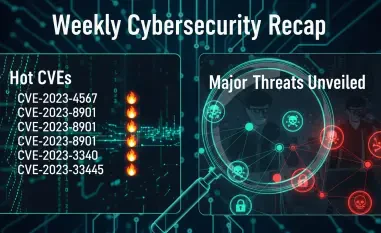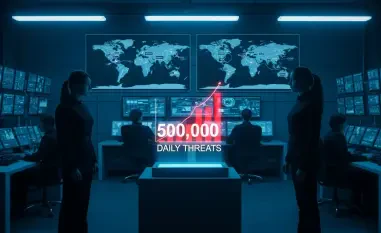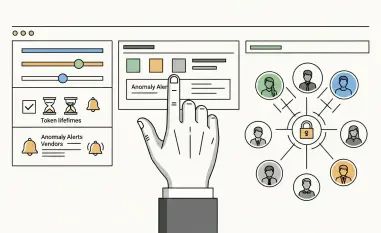Unveiling the Case: Dutch Teens and Alleged Russian Connections
In an era where digital threats loom larger than ever, a startling case has emerged from the Netherlands, capturing the attention of national security experts and raising critical concerns. Three 17-year-old Dutch teenagers stand accused of aiding a hacker group affiliated with the Russian government, sparking alarms about the vulnerability of critical infrastructure. Their alleged activities center on mapping and sharing sensitive Wi-Fi network data in The Hague, a city central to Dutch political and international affairs.
This incident sparks pressing questions about how such young individuals could become entangled in sophisticated cyber espionage. The potential compromise of network data poses a direct threat to national security, as it could enable foreign actors to infiltrate systems or launch cyberattacks. The case underscores a chilling reality: even minors can play a pivotal role in geopolitical conflicts through digital means.
Beyond the immediate concerns, the broader implications of this situation are profound. If proven, the involvement of Dutch teens in sharing critical information with foreign entities could expose weaknesses in both cybersecurity frameworks and societal awareness. This scenario demands a closer examination of how digital espionage operates and who might be recruited to carry it out.
Context and Significance of Cyber Espionage in the Netherlands
The Netherlands, as a hub for international organizations and a key player in European politics, has increasingly become a target for cyber threats. With the rapid evolution of espionage in the digital age, traditional spying has transformed into complex online operations that can destabilize nations without a single shot being fired. This shift has placed countries like the Netherlands on high alert, especially given their strategic importance.
Russian interference, in particular, has been a growing concern across Western nations, with numerous documented attempts to influence political processes or access sensitive data. The Dutch context is especially critical, as the country hosts vital institutions such as the International Court of Justice and various government bodies in The Hague. Any breach of digital security in this region could have far-reaching consequences for both national and international stability.
This case involving young suspects amplifies the urgency of addressing cyber espionage. It highlights how foreign powers may exploit not just technology but also vulnerable individuals within a society. The significance lies in recognizing that digital threats are no longer confined to state actors or seasoned criminals but can involve ordinary citizens, even teenagers, in acts that jeopardize national interests.
Investigation Details, Legal Framework, and Key Findings
Methodology
The investigation into the alleged cyber espionage activities of the three Dutch teens was initiated following a critical report from the Military Intelligence and Security Service (MIVD). Conducted by the State Interference Team of the National Investigation and Interventions Unit, the probe reflects a coordinated effort to tackle high-stakes digital threats. This specialized approach underscores the gravity of the accusations and the priority given to safeguarding national security.
On September 22, authorities arrested two of the suspects, while the third was interviewed without detention. A range of devices belonging to the teens were confiscated for forensic analysis, providing potential evidence of their digital interactions. These steps illustrate the meticulous process of gathering data to build a case in an area where tangible proof can be elusive due to the nature of cyber activities.
Interviews with the suspects have been a key component of the investigation, aiming to uncover the extent of their involvement and connections. The collaborative work between intelligence services and law enforcement demonstrates a robust response to emerging cyber threats. This methodology ensures that every angle, from technical evidence to personal testimonies, is thoroughly explored.
Findings
The core findings of the investigation reveal a troubling connection between the primary suspect and a Russian government-affiliated hacker group. This individual is believed to have directly communicated with the group, receiving instructions to map Wi-Fi networks across The Hague. The collected data was allegedly shared with a client, presumed to be linked to the Russian entity, in exchange for payment.
Further details indicate that the main suspect enlisted two other minors to assist in these activities, broadening the scope of the operation. Notably, investigators found no evidence of coercion or external pressure on the primary suspect, suggesting that participation was voluntary. This aspect raises significant concerns about the motivations driving such actions among young individuals.
While the third minor’s role appears limited, their involvement still necessitated an interview and the seizure of personal devices for examination. The shared data could potentially facilitate digital espionage or enable cyberattacks, posing a direct risk to Dutch infrastructure. These findings paint a picture of a small but impactful network of teens engaged in activities with serious national security implications.
Implications
The implications of these findings are far-reaching for Dutch national security, as they expose vulnerabilities in the digital landscape that foreign actors could exploit. The mapping of Wi-Fi networks, though seemingly innocuous, can provide critical access points for launching sophisticated cyberattacks or intercepting sensitive communications. Such risks highlight the urgent need for enhanced protective measures.
Legally, this case falls under the updated Dutch Criminal Code, which now includes stringent penalties for digital espionage. With a maximum sentence of eight years, or up to 12 years if severe consequences like loss of life occur, the law reflects a firm stance against actions that harm national interests. This legal framework equips authorities with the tools to address modern threats effectively.
Moreover, the involvement of minors in such activities signals a societal challenge that extends beyond legal repercussions. It points to gaps in awareness and education about the dangers of cyber engagement with foreign entities. Addressing these implications requires a multifaceted approach, combining legal enforcement with preventive strategies to safeguard both technology and the younger generation.
Reflection and Future Directions
Reflection
Dealing with minors in the context of complex cyber operations presents unique challenges for authorities and society alike. The absence of coercion in this case adds a layer of difficulty, as it suggests that personal choice or external influences, rather than force, drove the suspects’ actions. This factor complicates the understanding of how and why young individuals become involved in espionage.
The accessibility of cyber tools and the potential for foreign recruitment tactics to target impressionable teens are critical issues to consider. These elements may lower the barrier to entry for engaging in illicit digital activities, making it easier for foreign powers to exploit gaps in awareness. Deeper insight is needed into the psychological and social factors that make minors susceptible to such recruitment.
Additionally, this case reveals the evolving nature of threats in the digital realm, where age or experience may not be barriers to participation. Reflecting on these dynamics emphasizes the importance of tailored interventions that address the unique vulnerabilities of younger populations. A comprehensive approach must balance accountability with efforts to prevent future incidents through education and support.
Future Directions
Looking ahead, research should focus on uncovering the motivations behind young individuals’ involvement in cyber espionage. Understanding what drives teens to engage with foreign hacker groups—whether financial gain, ideological alignment, or other factors—can inform targeted prevention strategies. Such studies could provide valuable data for shaping policies that address root causes.
Enhancing cybersecurity education is another vital area for future efforts. Programs aimed at teaching young people about the risks of online interactions and the consequences of sharing sensitive data could serve as a powerful deterrent. Integrating these lessons into school curricula and community initiatives might build a stronger foundation of digital literacy across the population.
Finally, strengthening international cooperation is essential to counter foreign interference and dismantle hacker networks that operate across borders. Collaborative efforts between nations can improve intelligence sharing and develop unified responses to cyber threats. By focusing on these directions, policymakers and researchers can work toward a more secure digital environment for all.
Concluding Thoughts on Cybersecurity and National Defense
The investigation into the involvement of three Dutch teenagers in potential Russian cyber espionage uncovered a disturbing reality of young individuals participating in activities that threatened national security. Their actions, centered on mapping and sharing Wi-Fi network data in The Hague, exposed critical vulnerabilities that could have facilitated cyberattacks. The legal response, underpinned by the updated Dutch Criminal Code, demonstrated a commitment to tackling digital threats with severe penalties.
Moving forward, actionable steps must prioritize the development of comprehensive cybersecurity frameworks that protect against both technical breaches and the exploitation of vulnerable individuals. Investing in educational outreach to inform teens about the risks of engaging with foreign entities online emerged as a key solution to prevent similar incidents. Additionally, fostering global partnerships to combat hacker groups offered a pathway to address the transnational nature of these threats.
Ultimately, this case served as a wake-up call to reinforce national defense in the digital age. Establishing proactive measures, such as real-time monitoring of suspicious cyber activities and creating support systems for at-risk youth, could mitigate future risks. By addressing both the technological and human dimensions of cyber espionage, societies can better safeguard their interests against evolving dangers.













